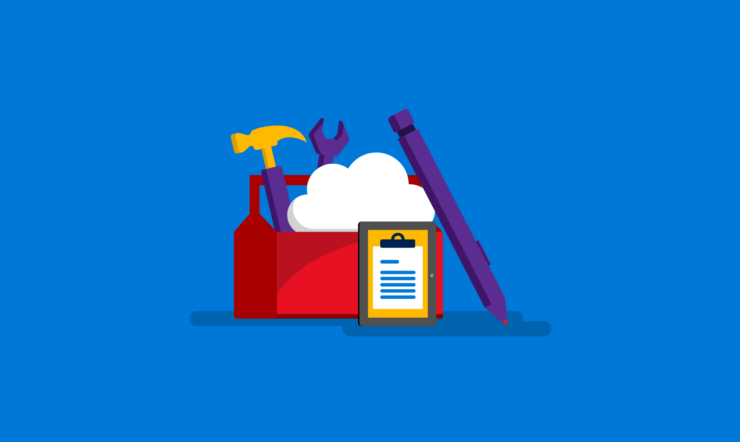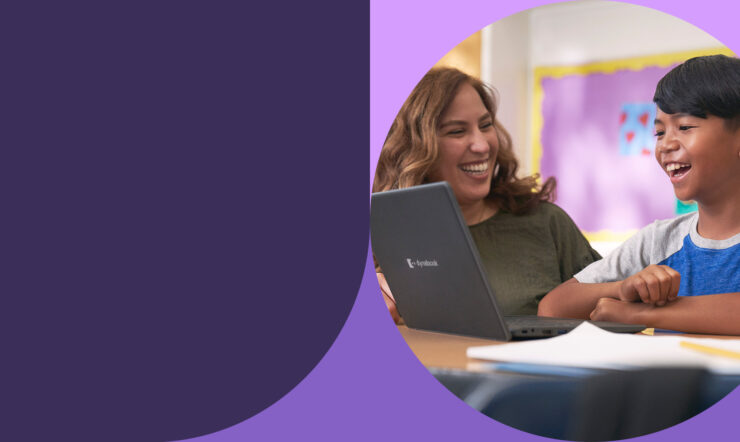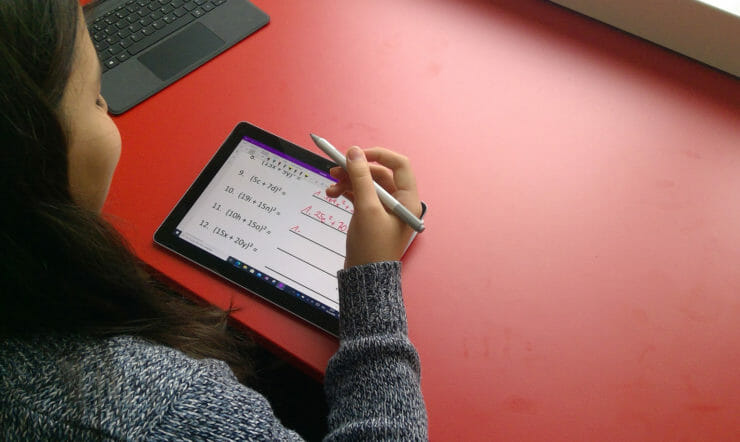Government agencies all over the world experience a huge transformation. Obviously, because of the COVID-19 pandemic the trend of remote work has taken off in ways nobody could have imagined a year ago. Since offices closed and civil servants needed to stay in their homes, remote work collaboration was the only option to continue serving citizens. When the COVID crisis passes, remote work is here to stay, because the flexibility to work from anywhere provides many opportunities. More than 42% of the global workforce will be mobile by 2022. To enable remote work, having the right technologies is crucial to be successful. A survey conducted by Microsoft illustrates this convincingly: 93% of millennial employees value technology when choosing an employer.
Besides contributing to the attractiveness as an employer, technology can help the public sector save money. McKinsey has estimated that government agencies all over the world could save $3.5 trillion per year by 2021 through productivity gains. Study shows however that almost 78% of government agencies spend a large majority of their IT budgets on operating and maintaining legacy systems. In this article we will show you how Microsoft and Citrix can help boost productivity at government agencies.
The future of government work unfolds along three dimensions
When we talk about the future of work three dimensions play a key role: the way the work is done (how it is executed), the workforce executing the work (the employees) and the workplace (the location where the work is done).
- Work
Developments such as advanced automation and cognitive technology will change the way public sector work gets done. These emerging technologies will help employees create more value for constituents and enhance their professional satisfaction.
- Workforce
Enabled by technology, government institutions will increasingly make use of more varied work arrangements, accessing more diverse pools of skills and capabilities, both inside and outside the organization.
- Workplace
Technology and new models for employing talent will redefine the workplace and its organizational structure. These changes will impact physical workspaces (including remote work) along with policies that promote employee well-being and productivity.
Microsoft and Citrix reimagine the flexible workplace within governments
To help government agencies to respond to these trends Microsoft and Citrix have joined forces. Satya Nadella, CEO of Microsoft says the following about this collaboration: “As organizations everywhere adapt to new ways of work, they need to reimagine how work gets done. Together with Citrix, we will apply the power of Azure to this challenge, helping our customers seamlessly and securely connect their employees to their applications, so they can be more agile and productive wherever they are.
In this blog we will show you how the four pillars of the collaboration between Citrix and Microsoft provide the best solutions to respond to the many challenges the public sector faces. But before we dive in, let’s quickly introduce the protagonists: Windows Virtual Desktop and Citrix Cloud.
Windows Virtual Desktop
Windows Virtual Desktop (also known as WVD) is a virtual machine that hosts a desktop and app virtualization service that runs on the Azure cloud. The platform can bring together Microsoft 365 and Azure to provide users with a multi-session Windows 10 experience. This gives organizations great advantages like reducing IT costs and faster innovation. Starting with the costs, whenever you run an instance of Windows on a virtual machine that runs on-premises, you need a certain number of base resources, like memory, CPU, and storage per VM. So that is a cost per user. When running Windows 10 multi-session you use these same resources, but for multiple users.
Furthermore on-premises virtual desktops are built for 3 to 5 years, and then after that period organizations decide what to do next. If they want to continue with an on-prem virtual desktop, they must upgrade to a latest version of Windows, a latest version of Office and other software and they need to purchase new hardware. Windows Virtual Desktop is continuously updated so you can break through the 5-year cycle and start with continuous improvement of your virtual desktop infrastructure.
Citrix Cloud
Citrix Cloud is a platform that hosts and administers Citrix services. It connects to your resources through connectors on any cloud or infrastructure you choose (on-premises, public cloud, private cloud, or hybrid cloud). It allows you to create, manage, and deploy workspaces with apps and data to your end-users from a single console.
Now that we introduced WVD and Citrix Cloud, let’s look at the advantages of their combined usage to boost productivity at government agencies.
- Any device, any application, any connection for the public sector
Especially in the Work from everywhere era, both citizens and civil servants demand extreme flexibility from their government agency’s IT departments. Luckily, flexibility is in the DNA of both Microsoft and Citrix. We provide users with the possibility to work on any device. That way they can use their trusted smartphones, tablets, and laptops (no matter what operating system they use) for their work or to communicate and collaborate. Through an all-in-one UI they can directly access their favorite apps, such as Microsoft Teams, their calendars and even apps that run on-premises. And finally, they can work on any connection. This is especially useful in times where the whole household works from home and bandwidth is limited.
- User centric security for civil servants
Security should be a top priority for government agencies. Many security solutions however lack user friendliness. Staff needs to log in with separate credentials on different devices and applications. The result: users try to find (insecure) shortcuts. That is why Citrix and Microsoft provide a secure environment out of the box, without compromising the user experience. This solution gives civil servants the ability to do what they are supposed to do in their jobs: serve the public. They don’t need to worry about security.
- Personalized hybrid cloud journey for government agencies
To fulfill users’ wishes for flexibility, an increasing number of public sector organizations is moving its workloads to the cloud. But since different organizations are at various locations in their cloud journeys, it’s our combined vision that governments should go at their own pace. Instead of large all-or-nothing migration projects that take months and are very costly, you can start with the quick wins. If you have workloads which you want to run on Virtual Desktop as part of a new project, it only takes you five clicks in the Citrix Cloud Management layer to deploy a new Windows Virtual Desktop.
- Proven joint track record
With our joint customer base of more than 400.000 organizations that have relied on our joint solutions for more than 30 years, we have a lot of experience in complimenting each other. Since actions speak louder than words, let’s look at this reference of the German Bundesagentur für Arbeit. Using Windows Virtual Desktop and Citrix, they managed to enable remote work for their 100.000 users within only three days.
Are you interested in the possibilities Microsoft and Citrix can provide your government agency? Click here to learn more about our joint solutions.


























